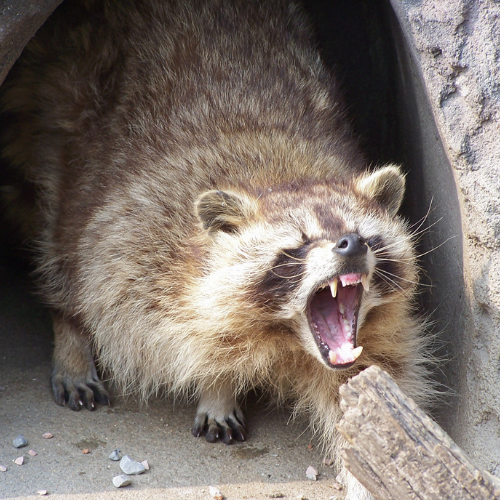Raccoon
Introduction to
Raccoons (Procyon lotor) are highly adaptable mammals known for their distinctive black masks and dexterous front paws. These nocturnal creatures are native to North America and are often found in urban, suburban, and rural areas. While raccoons play an essential role in ecosystems by controlling insect and rodent populations, they can become problematic when they invade homes, gardens, and other human spaces. Understanding the biology, habits, and effective prevention methods for raccoons is crucial for managing their presence and minimizing conflicts.
Recognition
Raccoons are medium-sized mammals, typically measuring 16 to 28 inches in body length and weighing between 8 to 20 pounds, though some individuals can grow larger. They have a characteristic black “mask” across their eyes and a bushy tail with alternating rings of black and gray. Their fur is generally grayish-brown, and they have a robust, stocky build. Raccoons possess highly dexterous front paws with five fingers, allowing them to manipulate objects and open containers. Unlike similar animals such as opossums or skunks, raccoons are recognized by their masked faces and ringed tails.
Biology
Raccoons have a lifecycle that includes birth, juvenile, and adult stages. Females give birth once a year, typically in late spring after a gestation period of about 63 days. Litters usually consist of 2 to 5 kits, which are born blind and helpless. The kits open their eyes at around three weeks and are weaned by two to three months. Juvenile raccoons stay with their mother through the summer and fall, learning to forage and survive independently. Raccoons reach sexual maturity by one year of age. They are omnivorous, feeding on a wide range of foods, including fruits, nuts, insects, small animals, and human food waste.
Habits
Raccoons are nocturnal and highly adaptable, thriving in diverse environments from forests and wetlands to urban areas. They prefer habitats with access to water and food sources and are skilled climbers and swimmers. Raccoons often nest in tree cavities, burrows, abandoned buildings, and attics. They are known for their curious nature and problem-solving abilities, often raiding garbage cans, compost piles, and pet food containers. Raccoons have a home range that can vary from a few acres in urban areas to several square miles in rural settings. They are solitary animals, except during the breeding season and when females are raising their young.
Prevention
Preventing raccoon infestations involves removing attractants and securing potential entry points. Keep garbage cans tightly sealed and avoid leaving pet food or birdseed outside. Store food and compost in secure containers. Remove brush piles, woodpiles, and other debris that could provide shelter. Seal openings to attics, basements, and crawl spaces with sturdy materials. Use raccoon-proof fencing around gardens and fish ponds. Motion-activated lights or sprinklers can deter raccoons from entering your yard. If raccoons have already taken up residence, consider using raccoon repellents or contacting a professional for humane removal.
Professional
If raccoons become a persistent problem, professional pest control services can provide effective solutions. STL Pest Control offers comprehensive treatments to manage raccoon populations and protect your property. Their technicians are trained to identify raccoon activity and apply appropriate control methods, including trapping and exclusion. In severe cases, they may recommend ongoing maintenance plans to keep raccoon populations under control. Professional services ensure thorough and humane control, providing peace of mind and a safer living environment.



Our Office









